Massachusetts has it all – stunning coastline, thriving cities, and an enviable quality of life. But did you know that Massachusetts is also home to some of the wealthiest cities in the United States? With median household incomes ranging from $81,027 to $250,000, these cities are considered among the most affluent in the country.
The towns of Dover and Newton top the list with median household incomes of $250,000 and $154,398, respectively. Despite their relatively small sizes, these cities are hubs of activity with excellent schools, cultural attractions, and plenty of recreational opportunities.
So if you’re looking for an amazing and affluent place to live, these 10 cities in Massachusetts should definitely be on your list.
10. Amesbury Town
Area: 35.57 sq. km.
Elevation: 15 m.
Total Population: 17,269 (2022)
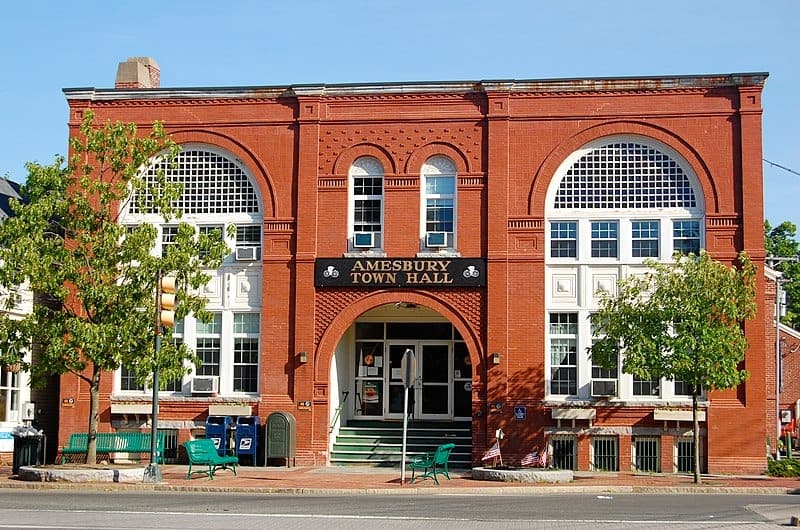
Amesbury was an early manufacturing hub and a thriving port for shipbuilding (iron, nails, hats, and carriages). After 1812, textile manufacturing peaked, but it thereafter started to fall. The town’s economy today mostly relies on light manufacturing, including metals, furniture, electronics, and computer parts, but services still play a significant role.
West Newbury is to the southwest, Merrimac to the west, Salisbury to the east, South Hampton (New Hampshire) to the north, and Newburyport to the southeast.
Both Interstates 495 and 95 provide service to the region. The city is home to several tourist destinations, including the Industrial History Center, John Greenleaf Whittier Home and Museum, Bartlett Museum, Heritage Park, Batchelder Park, Amesbury Town Forest, Powow River Conservation Area, Matt Warren Estate, The Macy-Colby House, Susannah Martin Memorial, and Lake Gardner Beach.
Did You Know?
Carriagetown is the nickname of this city.
9. Waltham
Area: 35.64 km.
Elevation: 15 m.
Total Population: 66,136 (2022)
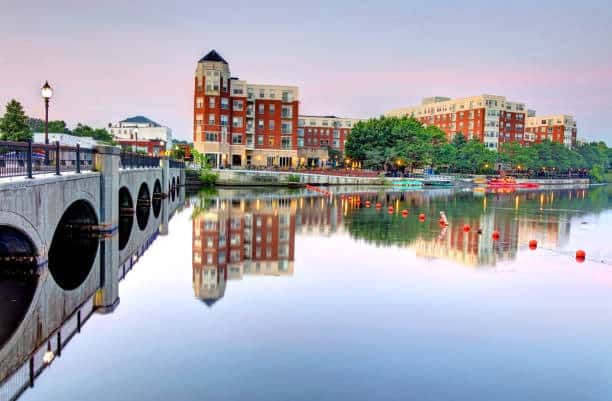
Waltham is a city in Middlesex County, Massachusetts, in the eastern United States, west of Boston and along the Charles River. It was a part of Watertown until it was established separately in 1738 after being settled in the 1630s. The plentiful waterpower drew early paper mills and gristmills.
There was built the first textile factory in 1813 that could turn raw cotton into finished cloth all under one roof. On the one hand, Waltham is close to several American interstates. The western part of the city is traversed by Interstate 95 and Route 128. Waltham has exits 26, 27, and 28. In Newton, Massachusetts, to the south, sits Interstate 90, often known as the Massachusetts Turnpike.
Did You Know?
Several state highways are within a few miles of the location due to its proximity to the Greater Boston metropolitan area’s center.
8. Medford
Area: 22.43 sq. km.
Elevation: 4.27 m.
Total Population: 59,659 (2022)
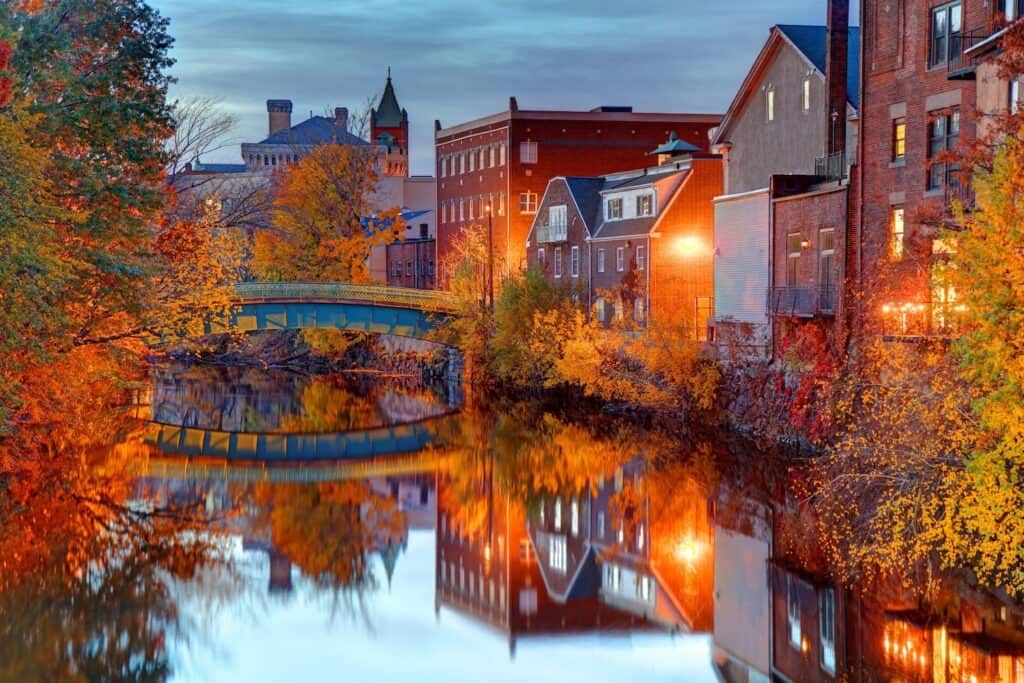
Medford is a city in Middlesex County, Massachusetts. It is located on the Mystic River, 11 miles from downtown Boston and 20 miles from Providence, Rhode Island. The population of Medford was 59,659 as of the census. The city has a diverse population that includes people of many different backgrounds, races, and ethnicities.
In fact, Medford is one of only three cities in Massachusetts, with more than 50% of its population being foreign-born (the other two are Worcester and Lynn), with the largest group being Asian Americans (12%). Medford is home to the second-largest public university in Massachusetts, Tufts University, and numerous other colleges, universities, and schools.
Did You Know?
It also has a large hospital district with several hospitals, including Emerson Hospital and Dana-Farber Cancer Institute.
7. Braintree Town
Area: 37.71 sq. km.
Elevation: 27 m.
Total Population: 38,822 (2022)

Braintree Town is a city located in the Commonwealth of Massachusetts. It is known for its industrial history and proximity to Boston, which makes it an ideal place to live. Braintree Town was incorporated in 1639 as a part of Bridgewater and has maintained its position as one of the oldest towns in New England ever since.
Braintree Town’s main attraction is its historic district, which contains many historic homes built between 1790-1850. Many of these homes are available for rent today because so many people have left this area due to its increasing popularity among young families who want to raise their children close enough to be able to commute into Boston easily but far enough away so that they can enjoy being outdoors more often than not during their time there!
Did You Know?
The town’s name comes from a family that settled there in 1640 by the name of Braintree.
6. Somerville
Area: 10.7 sq. km.
Elevation: 3.66 m.
Total Population: 82,103 (2022)
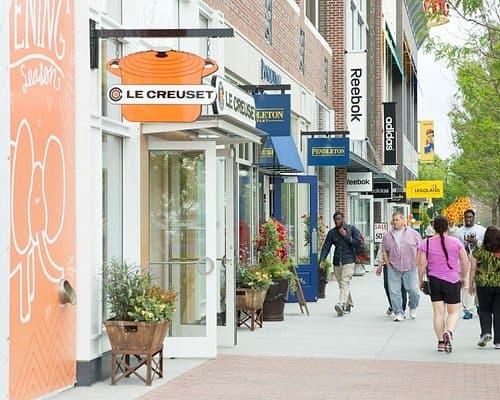
Somerville is a city in Middlesex County, Massachusetts. It is the fifth-most populous municipality in New England, with a population of approximately 82,103 as of 2022. Somerville is located approximately 9 miles west of Boston, on the Mystic River, and north of Medford. It is named after Somerville, Scotland.
The city has a historic district that contains many notable early buildings. It is home to many museums, such as the Somerville Historical Museum and the Museum of Fine Arts. The city is home to Tufts University, and it is a close-in suburb of Boston, with many connections to the city by mass transit.
Did You Know?
It also has a strong Irish American population and a growing Asian American population.
5. Newburyport
Area: 27.74 sq. km.
Elevation: 11 m.
Total Population: 18,463 (2022)
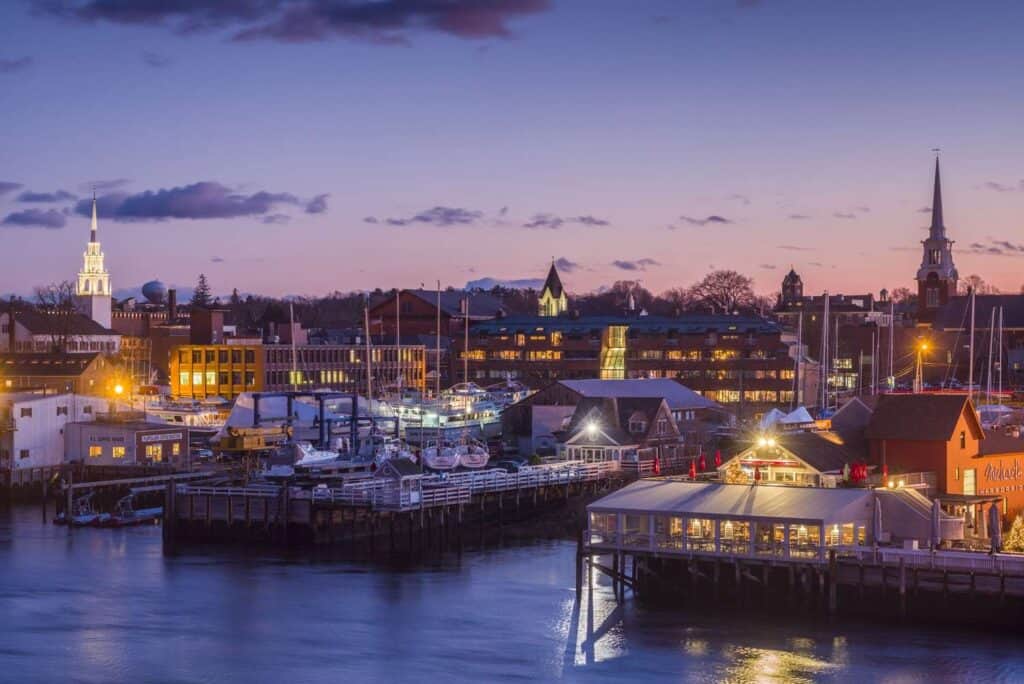
Newburyport, Massachusetts, is a city on the Merrimack River. It was incorporated in 1640. Today, it’s now over 18,463. There are several historic buildings in town, including the Old Town Hall and the Courthouse Square Historic District.
The Newburyport Historical Society Museum has exhibits on local history and local artists’ work. Newburyport has several parks: Summer Street Park sits on the banks of the Merrimack River, Maplewood Park sits on the banks of Lake Massapoag, and Highland Park is home to many trees and flowers along its paths.
Did You Know?
The Newburyport Public Library is located in the historic Cogswell Building on State Street, and it offers many services. There’s also a branch library located in West Newbury.
4. Melrose
Area: 12 sq. km.
Elevation: 41 m.
Total Population: 30,383 (2022)
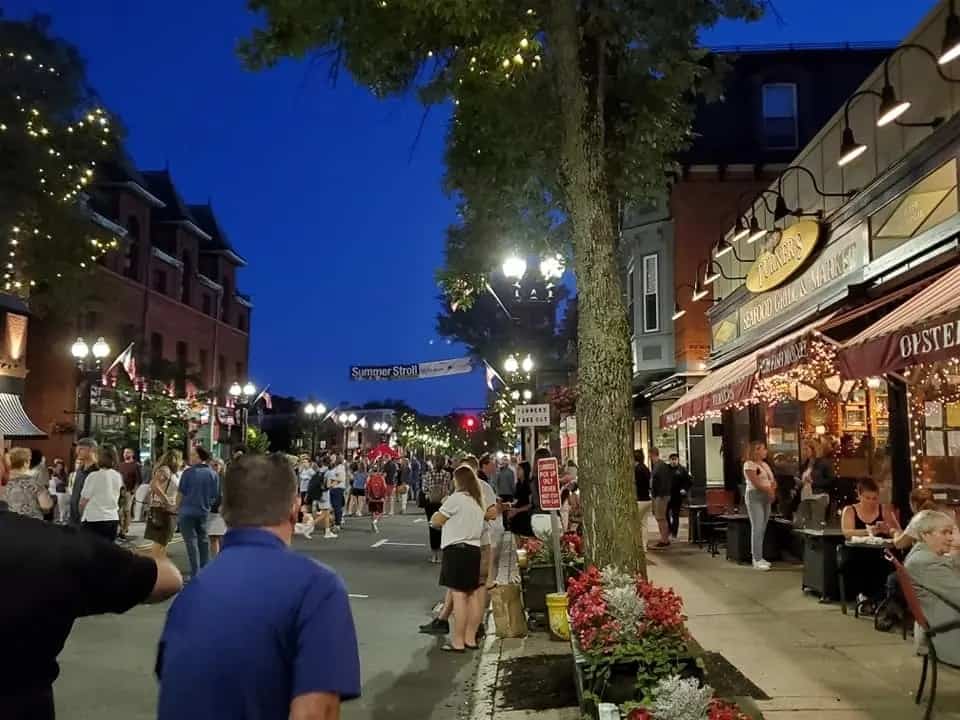
The City of Melrose is located in the western part of Massachusetts, and it is home to over 30,383 residents. Puritans originally settled the city in 1630, but it did not become a town until 1753. It was incorporated as a city in 1857.
Melrose has many cultural resources, including a theater, an art museum, and an outdoor amphitheater that hosts annual concerts.
The area also has several parks and trails for residents to enjoy. The city of Melrose is also home to many amenities, including a library, a community center, and an athletic complex. It is also close to several colleges and universities, including Bentley University and Suffolk University.
Did You Know?
The town is known for its annual “Pumpkin Festival,” which includes live music performances from local bands and artists as well as pumpkin carving contests for children.
3. Franklin Town
Area: 70 sq. km.
Elevation: 91 m.
Total Population: 36,745 (2022)
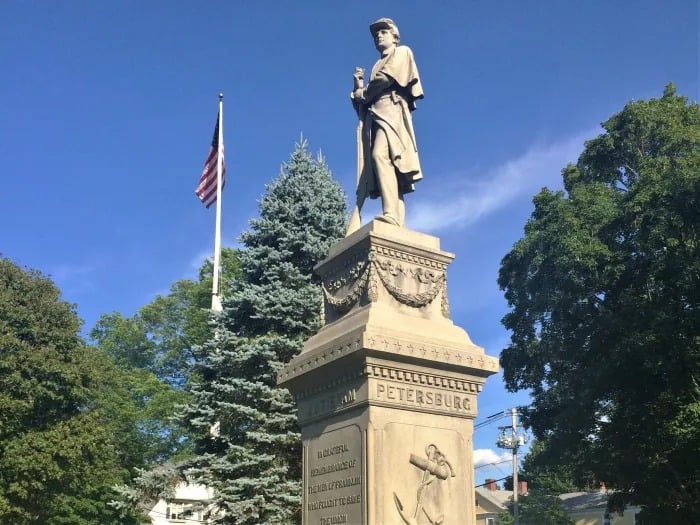
Franklin Town is a city in Massachusetts. It was founded in 1826, and it is located at the intersection of Route 3 and Route 20. The city has a population of roughly 36,745 residents as of 2022. The town has many businesses, including a bank and several restaurants. There are also many shops in Franklin Town. The main shopping area is called “The Mall,” which includes an indoor mall and an outdoor mall.
In addition to being home to many businesses and schools, Franklin Town City also has many recreational opportunities for residents. There is one golf course located within the city limits that offers both public and private membership options for those who want to play golf on their own time without having to pay for a membership through a club or association.
There are also multiple parks located throughout the town that offer trails for biking or walking as well as playgrounds for children who want to let off some steam after school hours have finished up for the day.
Did You Know?
The city also has many schools: there are 2 elementary schools (K-6), 2 middle schools (7-8), 1 high school (9-12), and 1 adult education center (ages 21+).
2. Newton
Area: 47.03 sq. km.
Elevation: 30 m.
Total Population: 89,679 (2022)
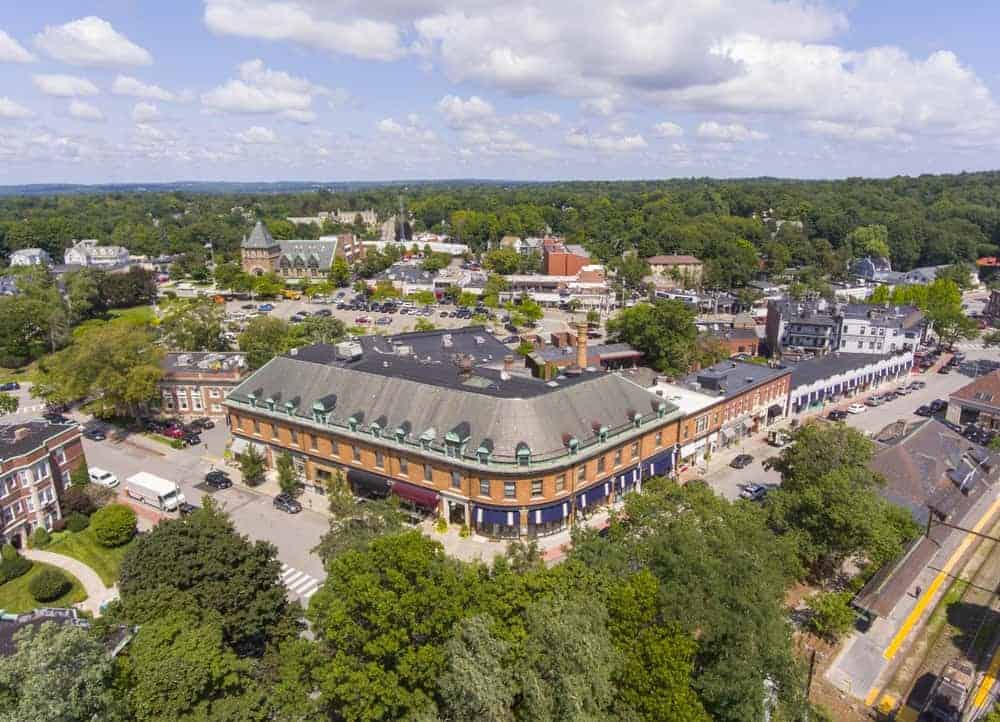
Newton is a city and the county seat of Newton County, Massachusetts, United States. It is located in the Merrimack Valley region of New England. The population was 89,679 as of the census. The city lies on the Merrimack River, approximately 30 miles (48 km) north of Boston and 15 miles (24 km) south of Manchester, New Hampshire.
Newton’s history dates back to 1630, when it was settled by Puritan settlers led by John Winthrop and William Bradford. However, it was not incorporated until 1795.
During its early years, Newton was known as “The Endicott City” because it was repeatedly raided and burned by the Pequot Indians. In 1876, Newton became a city upon the vote of its residents, who had rejected proposals from Danvers and Lynn.
Did You Know?
It is also home to the Baker Library at Phillips Academy, which has served as a model for community libraries worldwide.
1. Dover
Area: 39.9 sq. km.
Elevation: 46 m
Total Population: 6,229 (2022)
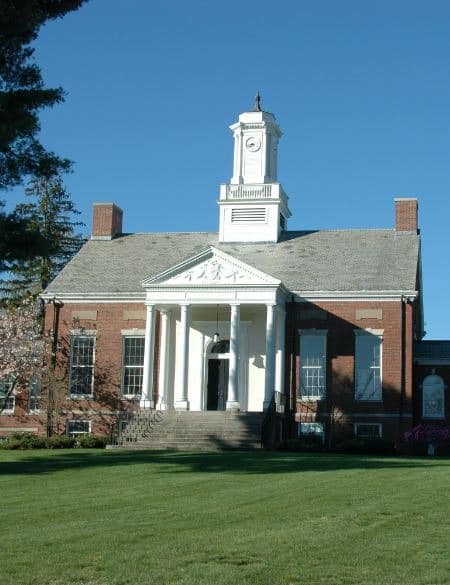
Considered to be the most expensive city in Massachusetts, Dover has a whopping median household income of over $250,000 per year. It is located at the mouth of the Merrimack River on Cape Cod Bay and has a population of 6,229 residents.
Dover is known for its colonial history, which includes being home to the Naval Air Station Cape Cod (1948-1998), the former Governor’s Mansion, and several historic homes.
Dover was also home to one of the largest naval shipyards in the country during World War II. Dover’s economy is mainly supported by service industries that include tourism, education, and health care. Dover is home to many historic attractions, including the Governor’s Mansion and the Olde Angel Inn, which was built in 1750.
Did You Know?
Dover is also home to the Cape Cod National Seashore, an area of land that was set aside as a national park in 1961. The park covers over 43,000 acres and has over 20 miles of trails for visitors to explore.
10 Largest Cities In North America By Population
10 Oldest Cities in the World (Updated 2021)
10 Oldest Cities in North America (Updated 2021)
7 Oldest Cities in America
10 Oldest Cities in Europe
8 Most Expensive Cities in the World in 2022
8 Most Expensive Cities in the U.S. (2022)
